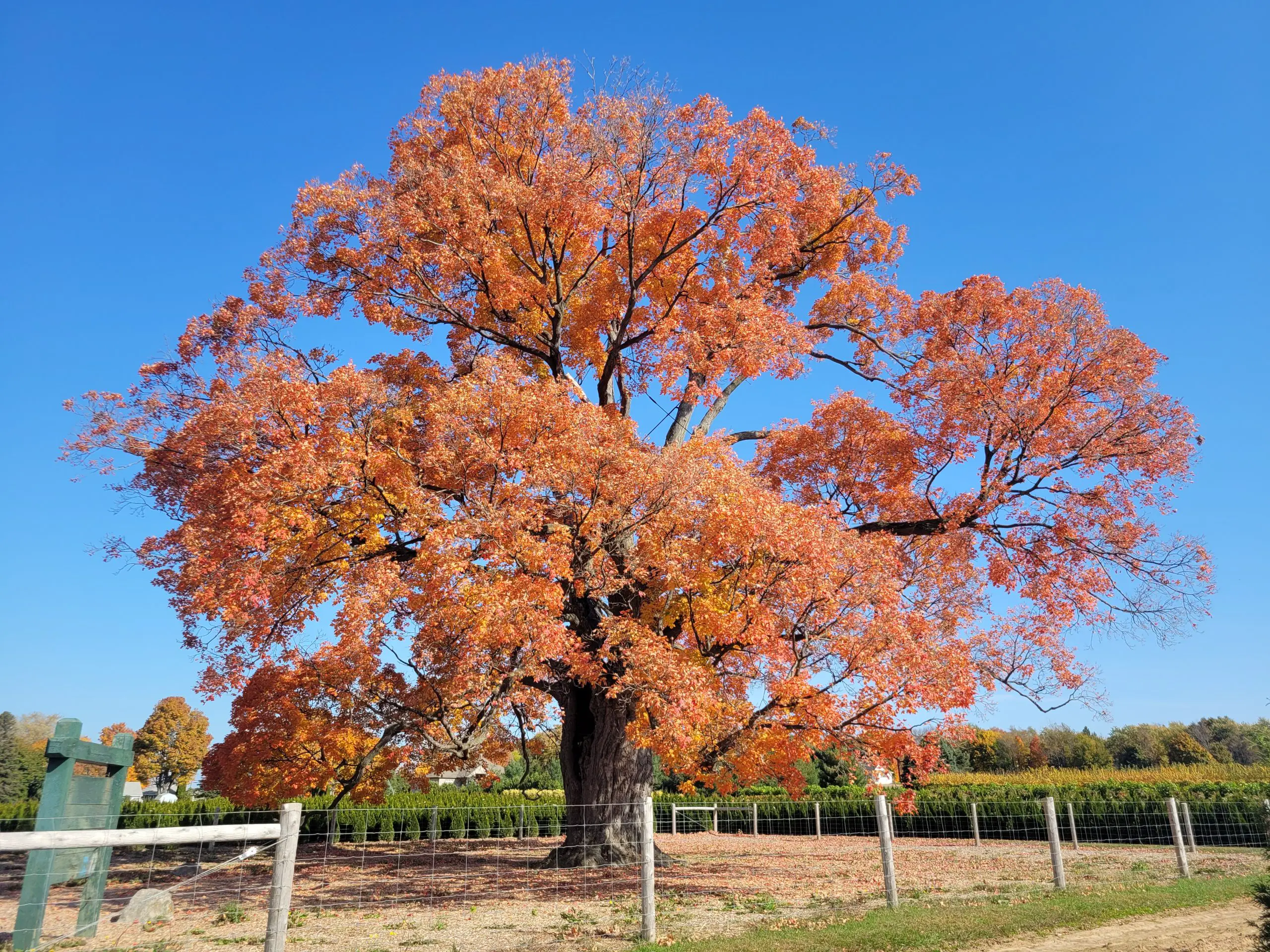The Sugar Maple, a native tree to the hardwood forests of eastern Canada and the northern parts of the Central and Eastern United States, is best known for its bright fall foliage and as the primary source of maple syrup. The Latin name for this tree is Acer saccharum, and it’s a significant part of both the cultural and natural history in its native regions. Famous for its brilliant, fiery autumnal colors, the Sugar Maple also contributes to the ecosystem by providing shelter and nourishment to various wildlife species.
A long-lived tree, the Sugar Maple can thrive for centuries under proper care. Its hard and dense wood is highly valued in the timber industry, while its sap is tapped to produce the much-loved maple syrup. Moreover, this majestic tree is often planted in urban and suburban areas for its aesthetic appeal and shade.
In addition to being an emblematic figure in the natural landscape, the Sugar Maple symbolizes strength and endurance. It’s the national tree of Canada, represented in the country’s flag as a stylized maple leaf. Its contribution to economy, ecology, and culture makes it a tree of multifaceted importance.
| Common Names | Sugar Maple, Rock Maple, Hard Maple |
|---|---|
| Botanical Name | Acer saccharum |
| Family | Sapindaceae |
| Plant Type | Deciduous tree |
| Mature Size | 60 to 75 feet tall, 40 to 50 feet wide |
| Sun Exposure | Full sun to partial shade |
| Soil Type | Moist, well-drained soil |
| Hardiness Zones | 3 to 8 |
| Native Area | Eastern Canada, Northern and Central Eastern United States |
Sugar Maple Care
Sugar Maples are relatively easy to care for, provided they are planted in the right conditions. They prefer moist, well-drained soil that is slightly acidic but can adapt to various soil types. Regular watering is essential during dry spells, especially for young trees.
Pruning is generally only needed to remove dead, damaged, or crowded branches. Mulching around the base can help retain moisture and regulate soil temperature. A consistent care regimen will result in a healthy and vibrant tree that can be enjoyed for generations.
Light Requirement for Sugar Maple
Sugar Maple thrives in full sun to partial shade. An ideal location would provide at least 4 to 6 hours of sunlight daily to promote robust growth and optimal coloration, especially in the fall.
Soil Requirements for Sugar Maple
Though Sugar Maple can grow in various soil types, it prefers moist, well-drained soil that is slightly acidic. Avoid planting in compacted or heavy clay soils, as they can lead to root issues.
Water Requirements for Sugar Maple
Young Sugar Maples require consistent moisture, and even mature trees benefit from regular watering during prolonged dry periods. Ensuring proper hydration promotes healthy growth and resilience.
Temperature and Humidity
Sugar Maple thrives in a wide range of temperature and humidity levels but is best suited to temperate climates within its native hardiness zones.
Fertilizer
Sugar Maples generally do not require fertilization. However, a soil test can determine if any specific nutrients are lacking. If needed, a balanced, slow-release fertilizer can be applied in early spring.
Pruning Sugar Maple
Pruning is best done in the late winter to early spring when the tree is dormant. Focus on removing dead, damaged, or crowded branches, and be cautious not to over-prune, as this can stress the tree.
Propagating Sugar Maple
Sugar Maple can be propagated through seeds or cuttings. However, growing from seed is the most common method and aligns with the tree’s natural reproductive process.
How To Grow Sugar Maple From Seed
Growing Sugar Maple from seed requires stratification (cold treatment) for proper germination. Plant stratified seeds in well-drained soil in the spring and maintain consistent moisture as they grow.
Common Pests & Plant Diseases
Aphids
Aphids can be managed with insecticidal soap or by encouraging natural predators.
Verticillium Wilt
This soil-borne disease can be controlled by proper watering and planting in well-drained soil.
Common Problems With Sugar Maple
Leaf Scorch
Caused by dry soil or exposure to wind, leaf scorch can be mitigated by proper watering and mulching.
Girdling Roots
Girdling roots can choke the tree and are often a result of improper planting. Ensuring correct planting depth and spacing can prevent this issue.
Pro Tips
- Plant Sugar Maple in a location with ample space for its mature size.
- Use mulch to retain soil moisture and protect the tree’s root system.
- Enjoy the tree’s spectacular fall coloration by planting it as a focal point in the landscape.
- Consider the tree’s potential size and root spread when planting near structures or sidewalks.



